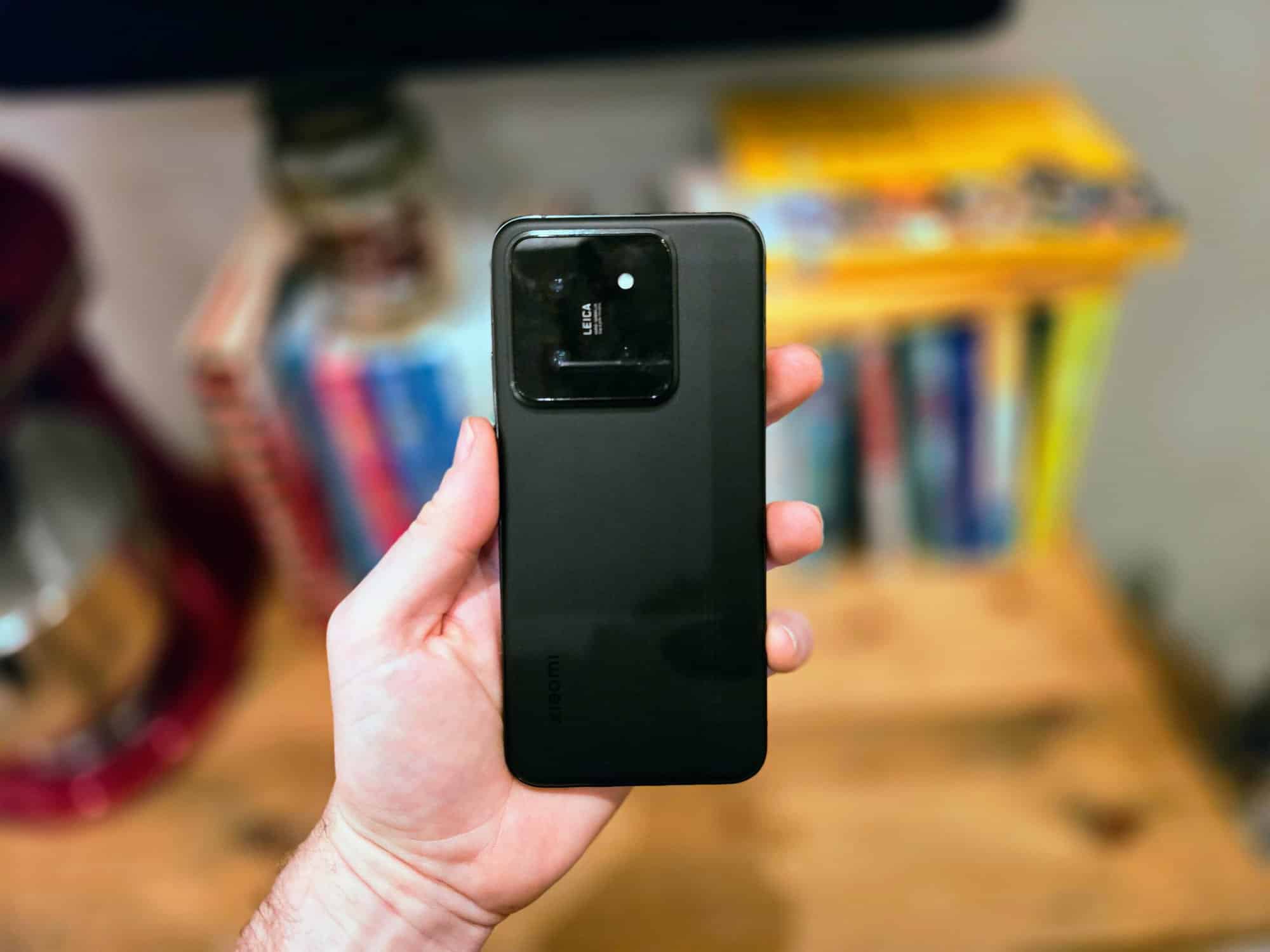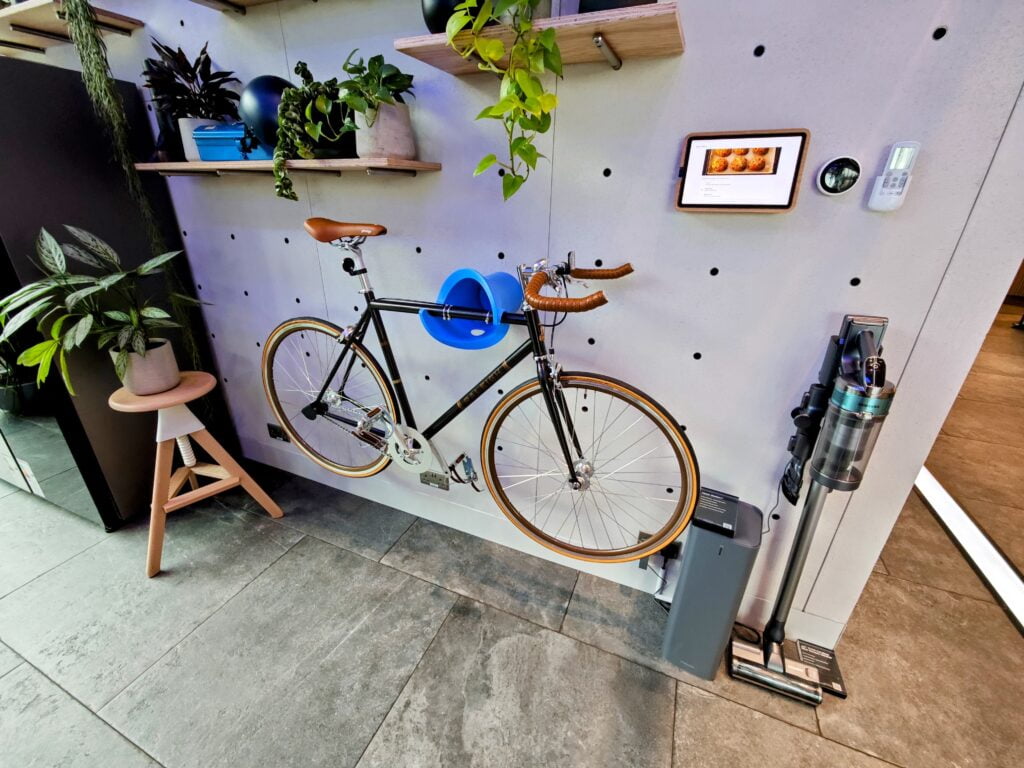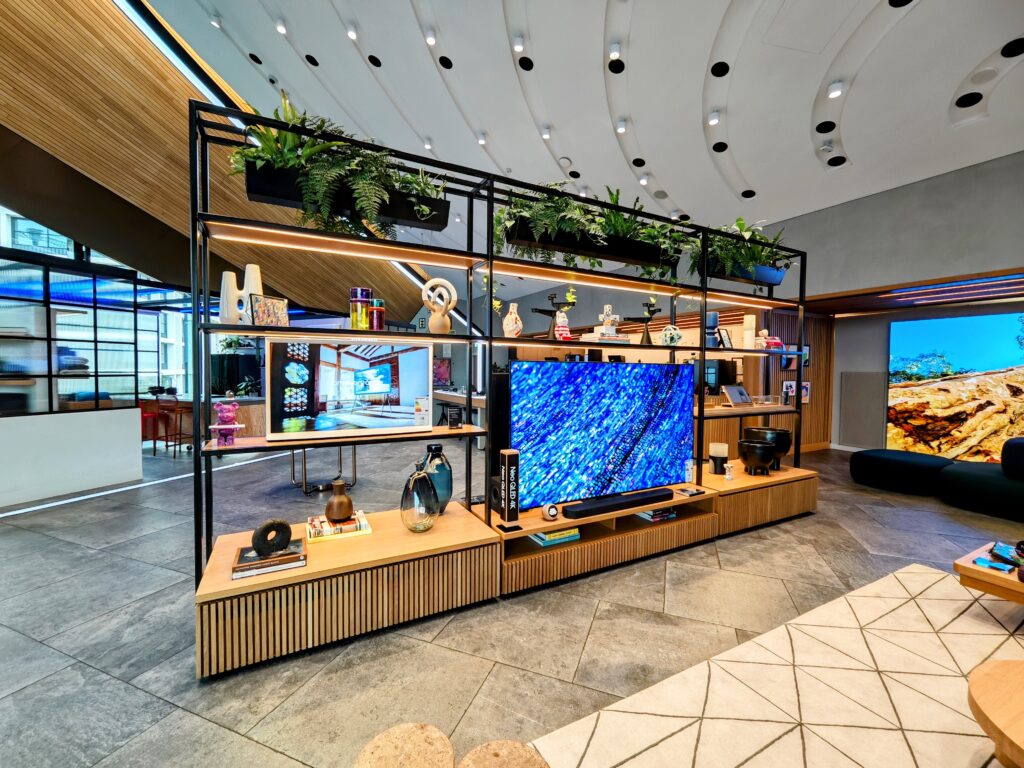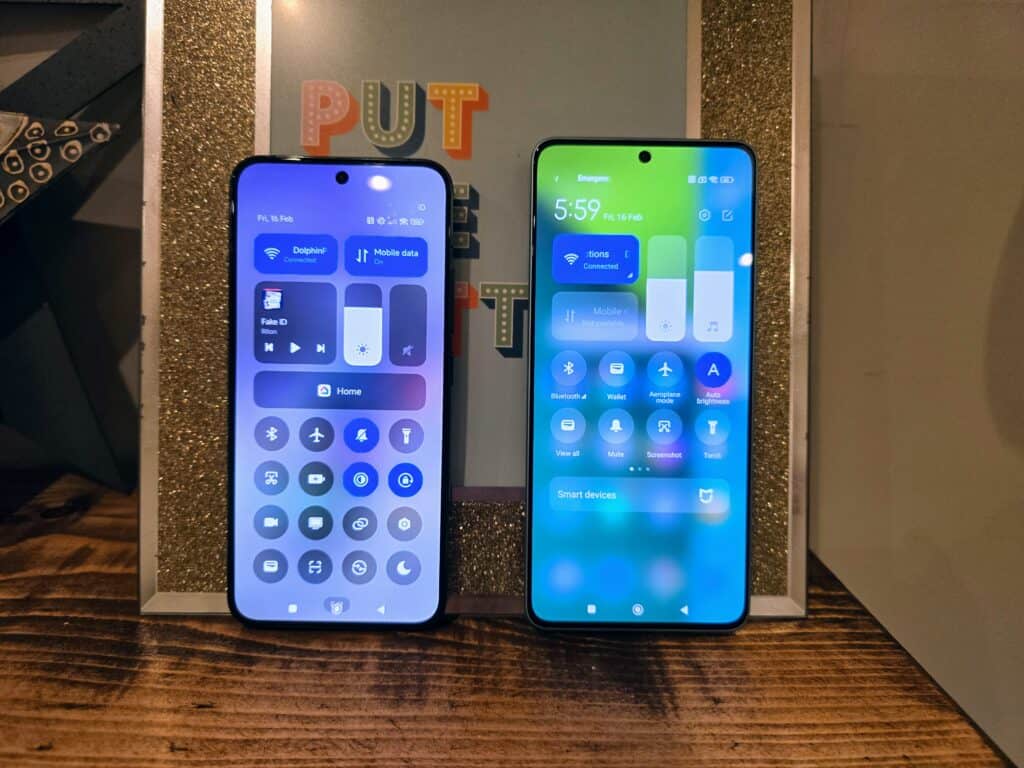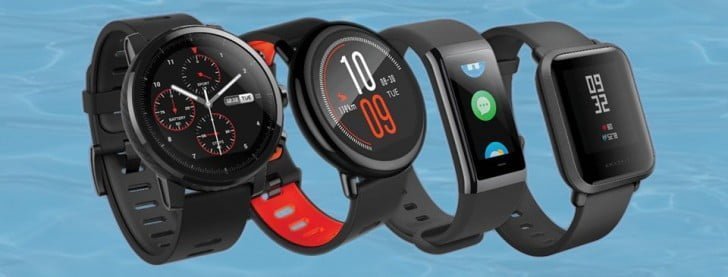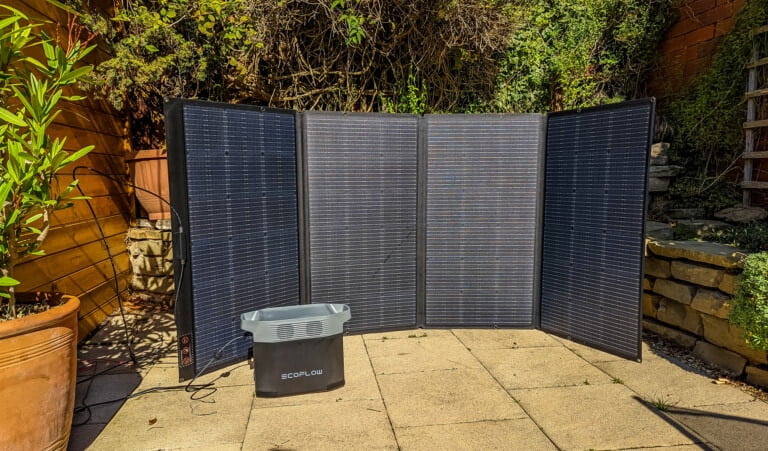Any links to online stores should be assumed to be affiliates. The company or PR agency provides all or most review samples. They have no control over my content, and I provide my honest opinion.
The Xiaomi 14 and 14 Pro were announced back in China at the end of October 2023. Xiaomi is now launching the Xiaomi 14 series globally.
Packing the latest Snapdragon 8 Gen 3 chipset, a vibrant AMOLED display with slim bezels, an upgraded camera system developed with Leica, super fast charging, and 5G connectivity, the Xiaomi 14 brings cutting-edge features in a compact form factor.
I’ve been testing the Xiaomi 14 for the past two weeks as my daily driver to find out if it lives up to expectations. Read on for my full review.
Xiaomi 14 vs 14 Pro vs 14 Ultra Specification
At the time of writing, the Xiaomi 14 Ultra was not officially launched, so the below specification is based on leaked details. Furthermore, it has been reported that the Xiaomi 14 Pro may not get a global launch.
| Xiaomi 14 | Xiaomi 14 Pro | Xiaomi 14 Ultra | |
| Dimensions | 152.8 x 71.5 x 8.2 mm or 8.3 mm | 161.4 x 75.3 x 8.5 mm | – |
| Weight | 188 g or 193 g (6.63 oz) | 223 g or 230 g (7.87 oz) | – |
| Build | Glass front, glass back or silicone polymer back, aluminium frame | Glass front, aluminium frame or titanium frame, glass back | Glass front (Gorilla Glass Victus 2), eco leather back, aluminium frame |
| SIM | Nano-SIM and eSIM or Dual SIM (Nano-SIM, dual stand-by) | Nano-SIM and eSIM or Dual SIM (Nano-SIM, dual stand-by) | Dual SIM (Nano-SIM, dual stand-by) |
| Protection | IP68 dust/water resistant (up to 1.5m for 30 min) | IP68 dust/water resistant (up to 1.5m for 30 min) | IP68 dust/water resistant (up to 1.5m for 30 min) |
| Display | LTPO OLED, 68B colors, 120Hz, Dolby Vision, HDR10+, 3000 nits (peak) | LTPO AMOLED, 68B colors, 120Hz, Dolby Vision, HDR10+, 3000 nits (peak) | LTPO AMOLED, 1B colors, 120Hz, Dolby Vision, HDR10+ |
| Display Size | 6.36 inches, 97.6 cm2 (~89.3% screen-to-body ratio) | 6.73 inches, 108.9 cm2 (~89.6% screen-to-body ratio) | 6.73 inches, 109.4 cm2 |
| Display Resolution | 1200 x 2670 pixels, 20:9 ratio (~460 ppi density) | 1440 x 3200 pixels, 20:9 ratio (~522 ppi density) | 1440 x 3200 pixels, 20:9 ratio (~521 ppi density) |
| OS | Android 14, HyperOS | Android 14, HyperOS | Android 13, MIUI 14 |
| Chipset | Qualcomm Snapdragon 8 Gen 3 (4 nm) | Qualcomm Snapdragon 8 Gen 3 (4 nm) | Qualcomm Snapdragon 8 Gen 3 (4 nm) |
| Card slot | No | No | No |
| Internal | 256GB 8GB RAM, 256GB 12GB RAM, 512GB 16GB RAM, 1TB 16GB RAM UFS 4.0 | 256GB 12GB RAM, 512GB 16GB RAM, 1TB 16GB RAM UFS 4.0 | 256GB 12GB RAM, 256GB 16GB RAM, 512GB 16GB RAM, 1TB 16GB RAM UFS 4.0 |
| Rear Camera | 50 MP, f/1.6, 23mm (wide), 1/1.31″, 1.2µm, dual pixel PDAF, Laser AF, OIS 50 MP, f/2.0, 75mm (telephoto), PDAF (10cm – ∞), OIS, 3.2x 50 MP, f/2.2, 14mm, 115˚ (ultrawide) | 50 MP, f/1.4-f/4.0, 23mm (wide), 1/1.31″, 1.2µm, dual pixel PDAF, Laser AF, OIS 50 MP, f/2.0, 75mm (telephoto), PDAF (10cm – ∞), OIS, 3.2x optical zoom 50 MP, f/2.2, 14mm, 115˚ (ultrawide), AF | 50 MP, f/1.6 or f/4.0, 23mm (wide), 1.0″-type, 1.6µm, multi-directional PDAF, Laser AF, OIS 50 MP, f/3.0, 120mm (periscope telephoto), 1/2.51″, Dual-Pixel PDAF, OIS, 5x optical zoom 50 MP, f/1.8, 75mm (telephoto), 1/2.51″, Dual-Pixel PDAF, OIS, 3.2x optical zoom 50 MP, f/1.8, 12mm, 122˚ (ultrawide), 1/2.51″, Dual-Pixel PDAF TOF 3D, (depth) |
| Features | Leica lens, Dual-LED dual-tone flash, HDR, panorama | Leica lens, Dual-LED dual-tone flash, HDR, panorama | Leica lenses, Dual-LED flash, HDR, panorama, 67mm filter ring holder (optional) |
| Video | 8K@24fps (HDR), 4K@24/30/60fps (HDR10+, 10-bit Dolby Vision HDR, 10-bit LOG), 1080p@30/60/120/240/960fps, 720p@1920fps, gyro-EIS | 8K@24fps (HDR), 4K@24/30/60fps (HDR10+, 10-bit Dolby Vision HDR, 10-bit LOG), 1080p@30/60/120/240/960fps, 720p@1920fps, gyro-EIS | 8K@24fps, 4K@24/30/60fps, 1080p@30/60/120/240/480/960/1920fps, gyro-EIS, Dolby Vision HDR 10-bit rec. (4K@60fps, 1080p) |
| Modules | 32 MP, (wide) | 32 MP, (wide) | 32 MP, f/2.0, 22mm (wide), 0.7µm |
| Features | HDR, panorama | HDR, panorama | HDR, panorama |
| Video | 4K@30/60fps, 1080p@30/60fps, gyro-EIS | 4K@30/60fps, 1080p@30/60fps, gyro-EIS | 1080p@30/60fps |
| Audio | Stereo speakers Snapdragon Sound | Stereo speakers 24-bit/192kHz Hi-Res audio Snapdragon Sound | Stereo speakers 24-bit/192kHz Hi-Res audio |
| WLAN | Wi-Fi 802.11 a/b/g/n/ac/6e/7, dual-band, Wi-Fi Direct | Wi-Fi 802.11 a/b/g/n/ac/6e/7, dual-band, Wi-Fi Direct | Wi-Fi 802.11 a/b/g/n/ac/6e/7, tri-band, Wi-Fi Direct |
| Bluetooth | 5.4, A2DP, LE, aptX HD, aptX Adaptive | 5.4, A2DP, LE, aptX HD, aptX Adaptive | 5.4, A2DP, LE, aptX HD, aptX Adaptive |
| Positioning | GPS (L1+L5), GLONASS (G1), BDS (B1I+B1c+B2a), GALILEO (E1+E5a), QZSS (L1+L5), NavIC (L5) | GPS (L1+L5), GLONASS (G1), BDS (B1I+B1c+B2a), GALILEO (E1+E5a), QZSS (L1+L5), NavIC (L5) | GPS (L1+L5), GLONASS (L1), BDS (B1I+B1c+B2a), GALILEO (E1+E5a), QZSS (L1+L5), NavIC (L5) |
| NFC | Yes | Yes | Yes |
| Infrared port | Yes | Yes | Yes |
| USB | USB Type-C 3.2, OTG | USB Type-C 3.2 Gen 2, OTG | USB Type-C 3.2, DisplayPort, OTG |
| Sensors | Fingerprint (under display, optical), accelerometer, proximity, gyro, compass, barometer, colour spectrum | Fingerprint (under display, optical), accelerometer, proximity, gyro, compass, barometer, colour spectrum | Fingerprint (under display, optical), accelerometer, proximity, gyro, compass, colour spectrum, barometer |
| Type | Li-Po 4610 mAh, non-removable | Li-Po 4880 mAh, non-removable | 5300 mAh, non-removable |
| Charging | 90W wired, PD3.0, QC4, 100% in 31 min (advertised) 50W wireless, 100% in 46 min (advertised) 10W reverse wireless | 120W wired, PD3.0, QC4, 100% in 18 min (advertised) 50W wireless, 100% in 40 min (advertised) 10W reverse wireless | 90W wired, PD3.0, QC4 50W wireless 10W reverse wireless |
It is believed that the global launch will have just one spec per phone.
The Xiaomi 14 with 12GB of RAM and 512GB of storage, and the 14 Ultra with 16GB of RAM and 512GB of storage.
Xiaomi 14 vs Xiaomi 13
The Xiaomi 14 has the same petite dimensions as its predecessor. However, there have been quite a few upgrades:
- Upgrade to the latest Snapdragon 8 Gen 3 (4 nm)
- Improved Display with LPTO, brighter display, and higher resolution
- Switch from MIUI 14 to HyperOS and now based on Android 14
- All models now use ultra-fast UFS 4.0 storage
- Significant camera upgrade for the telephoto lens and ultra-wide. They were 10MP and 12MP sensors, but they are now 50MP.
- The chipset upgrade also adds WiFi 7 and Bluetooth 5.4
- Upgraded to much faster USB Type-C 3.2
- Small increase to the battery 4610 mAh vs 4500 mAh
- Faster wired charging 90Wvs 67W
Considering many flagship phones only have incremental upgrades between generations, I think that’s an impressive number of changes.
Design – A rare small Android phone
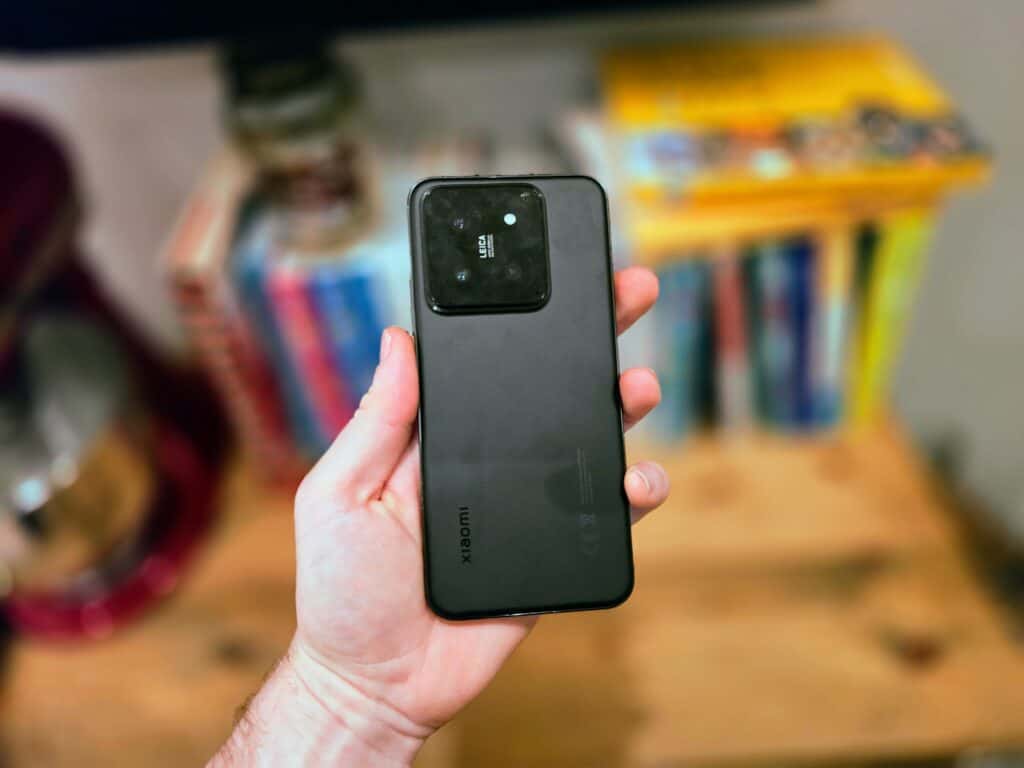
The Xiaomi 14 retains the same compact dimensions as its predecessor, measuring 152.8 x 71.5 x 8.2mm and weighing 188g. The phone feels incredibly premium thanks to its glass front and back sandwiching an aluminium frame. The smooth curved edges nestle nicely in your palm despite the dense weight.
You have a choice of three colours – Midnight Black, Flora Green, and Snow White. I’m testing the Midnight Black version which has a subtle frosted glass appearance that resists fingerprints beautifully. All colour options feature the same matte aluminium frame.
The phone carries an IP68 rating for dust and water resistance, so it should have no issues with the occasional splash. However, I wouldn’t recommend deliberately submerging it.
Display
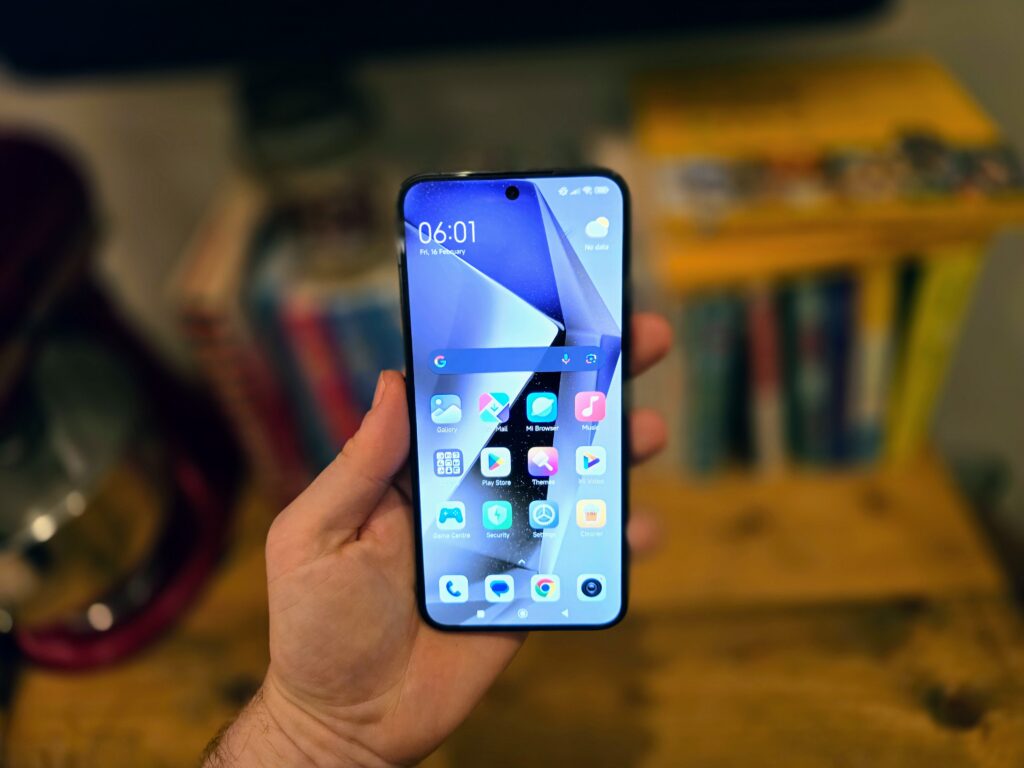
The Xiaomi 14 sports a stunning 6.36-inch flexible LTPO OLED display with slim bezels all round. The panel boasts rich 68 billion colours, 10-bit colour depth for smooth gradients, 500 nits typical brightness, and an impressive 1200 nits peak brightness when viewing HDR content.
With a crisp FHD+ resolution of 2400 x 1080 pixels, you get a sharp 460 pixels per inch. Images and videos look incredibly detailed as a result. The 20:9 aspect ratio also makes content more immersive.
The display supports industry standards like HDR10+, Dolby Vision, and DCI-P3 for vibrant, accurate colours when viewing supported content. Xiaomi has fine-tuned the colour reproduction to be natural and balanced.
My favourite feature is the adaptive 120Hz refresh rate enabled by LTPO technology. The screen can scale between 1-120Hz automatically based on the content, helping preserve battery life. Animations are extremely fluid, while text remains crisp thanks to the fast pixel response time.
You also get features like a blue light filter, sunlight mode boosting brightness in harsh light, and HDR upscaling for SDR videos.
Camera
The Xiaomi 14 features a highly versatile triple-camera setup. The official spec states that it uses a VARIO-SUMMILUX 1:1.6-2.2/14-75 ASPH lens which basically means the phone is equipped with an aspherical lens, and is capable of taking photos and videos from the wide aperture of f/1.6 to f/2.2, in distances from 14 mm to 75 mm with Leica DLSR-level quality.
For the main sensor, the spec is:
- 23mm f/1.6 Leica main camera
- 50MP wide camera
- Light Fusion 900 image sensor
- 13.5 EV high dynamic range, native 14-bit colour depth
- 1/1.31″ sensor size
- 2.4μm 4-in-1 Super Pixel
- f/1.6, 7P lens
Then the zoom lens is:
- 75mm f/2.0 Leica floating telephoto camera
- 50/32MP (total/effective) telephoto camera
- f/2.0, 6P lens
The ultrawide is:
- 14mm f/2.2 Leica ultra-wide camera
- 50MP ultra-wide camera
- f/2.2, 6P lens, 115° FOV
Finally, on the front:
- 32MP in-display selfie camera
- 0.7μm pixel size
- f/2.0, 5P lens, 89.6° FOV
- Dynamic Framing (0.8x, 1x)
The main wide camera captures crisp 12MP pixel-binned shots. Images show excellent detail, accurate colours, and a natural depth effect thanks to the large sensor size. The lens captures sufficient light to produce clean shots even in dim environments.
The telephoto camera delivers 3.2x lossless zoom shots, retaining the same high level of detail. This allows you to get closer to your subject without a bulky camera bump. For portraits, you can achieve a nice background blur to make your subject stand out.
Finally, the ultra-wide camera lets you capture sweeping landscapes and architecture. There is some distortion around the edges, but colours and details remain well-preserved otherwise.
The Xiaomi 14 captures vibrant, detailed shots across all three cameras. Having the versatility of an ultra-wide and telephoto lens makes it a great all-rounder.
Performance and Benchmarks
Powering the Xiaomi 14 is Qualcomm’s cutting-edge Snapdragon 8 Gen 3 chipset built on an efficient 4nm process. The octa-core CPU comprises one ultra-fast Cortex-X3 core clocked at 3.2GHz, four performance Cortex-A715 cores, and three efficient Cortex-A510 cores.
For graphics, you get an upgraded Adreno 740 GPU, promising up to 25\% faster rendering compared to the previous generation. The chipset also packs Qualcomm’s latest Hexagon processor with AI acceleration and improved natural language processing.
My test unit comes with 12GB of ultra-fast LPDDR5X RAM and 512GB of UFS 4.0 storage. Thanks to the 7.2Gbps data transfer speeds, app load times are instantaneous. You should have no issues storing all your apps, games, and media either.
Everyday performance is blazing fast as you would expect. Apps open instantly, multi-tasking is a breeze, and everything feels incredibly snappy. The UI animations are fluid and natural thanks to the high refresh rate display.
Gaming performance is equally impressive thanks to the upgraded GPU. Graphics-intensive titles like Call of Duty: Mobile and Asphalt 9 run smoothly at max settings. The phone does get slightly warm after prolonged gameplay but never uncomfortably so.
To quantify performance, I ran the Xiaomi 14 through various benchmark tests with the following results:
- Antutu V10:
- Total: 2014907
- CPU: 435579
- GPU: 861006
- Memory: 395141
- UX: 323181
- Geekbench 6: 2275 Single Core / 7122 Multi-Core
Frustratingly, it appears that Xiaomi has blocked their phones from running 3Dmark benchmarks. I have been unable to test this, the Redmi or Poco. However, I have benchmarked the Snapdragon 8 Gen 3 several times now, and the performance is superb. The Xiaomi 14 has the best Geekbench results of the phones I have tested, and the Antututu results sit between the Samsung Galaxy S24 Ultra and the iQOO 12. So the 3DMark performance, and gaming performance in general, should be superb.
Real-world usage reflects these findings. No matter what you throw at it, the Xiaomi 14 powers through without breaking a sweat. Heavy mobile gamers will especially appreciate the buttery frame rates in graphics-intensive titles.
Battery
Despite the compact size, the Xiaomi 14 still packs in a reasonably large 4,610mAh battery. Combined with the power-efficient Snapdragon 8 Gen 3 chipset, you can expect all-day battery life comfortably.
With my typical usage consisting of web browsing, social media, messaging, calls, and about an hour of gaming, I easily got through a full day on a single charge. More moderate users can potentially extend it to a day and a half.
Android 14 & HyperOS
The Xiaomi 14 runs the company’s HyperOS skin based on Android 14. I believe this is the first phone to launch in the West with HyperOS.
I have recently reviewed the Redmi Note 13 Pro and Poco X6, which both use MIUI 14. Even though there are quite a few changes between HyperOS vs MIUI, I didn’t really notice much difference.
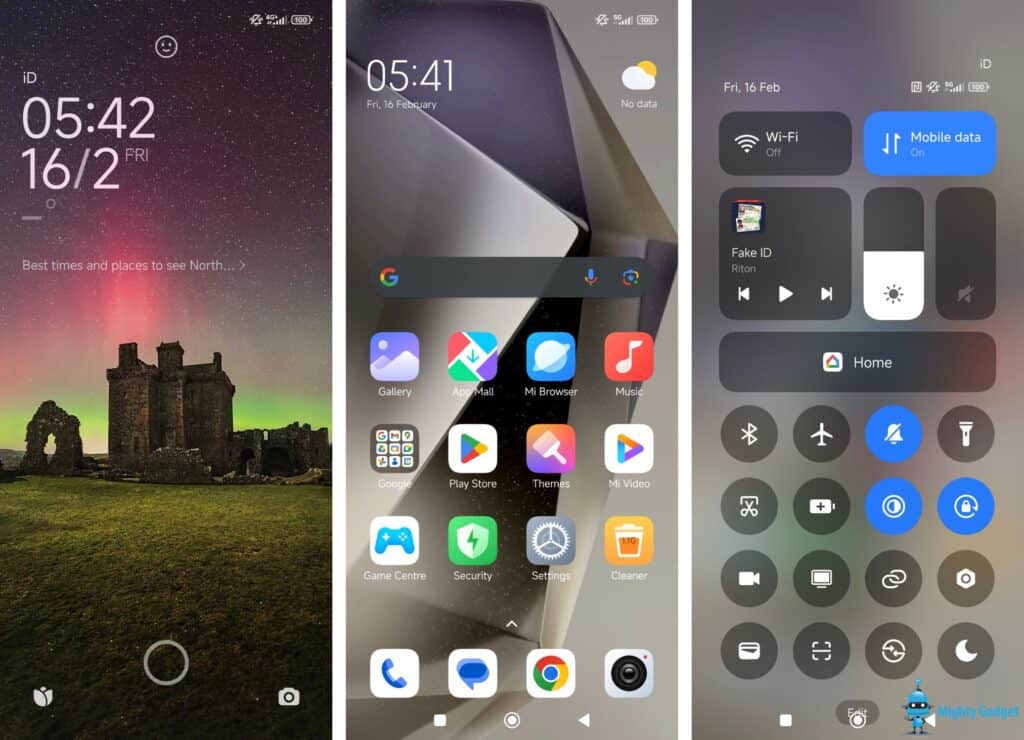
If I am honest, HyperOS & MIUI are two of the worst Android skins due to the large amount of bloatware. Yes, Samsung has heavily modified Android with OneUI, it is certainly bloated, but I feel that those inclusions add some value.
Most of the issues I have with HyperOS / MIUI are easy to resolve by uninstalling or disabling apps. For more stubborn apps, such as apps by Xiaomi, like Security, you can disable notifications and many of the annoying features. For example, I toggled off the cleaner and security scan features plus prevented as many notifications as possible.
Once you clean up all the apps, I find the HyperOS just as good as most other brands Android UI modifications.
Xiaomi promises three major Android OS updates and five years of security patches. So you can expect the Xiaomi 14 to last several years software-wise.
Price & Availability
At the time of writing, I do not have the official RRP.
It has been reported that the Xiaomi 14 will start at €1,099/£940 for the 12GB RAM and 512GB storage version. For reference, last year’s Xiaomi 13 launched at €999/£849 for the 8/256GB trim.
The Xiaomi 13 Pro did get a global launch, and that was £1100.
The Ultra has been reported as being priced at €1,499/£1285.
You can get a grey import of the Xiaomi 14 from eBay for just £553.
Alternative Small Phones
I think the main selling point of this phone is the flagship specs paired with a smaller form factor. Even though small phones are not to my taste, there is clearly a demand for them, with many people on Reddit wishing there were small options.
The Samsung Galaxy S24 is slightly smaller at 6.2 inches and more affordable at around £800. It has an inferior Exynos 2400 (4 nm) chipset, a lower-spec camera, lacks WiFi 7, has a smaller battery, and has lower charging. However, the One UI 6.1 is more refined and has less unwanted bloatware.
The Pixel 8 should be a great choice if you want something more affordable. It is priced at just £600. The main camera is better than the Xiaomi, and the OS is much better, but it lacks a zoom lens, and the 12MP ultrawide is disappointing. I am not overly keen on the Google Tensor G3, especially when you compare it to the Qualcomm, but on the smaller Pixel 8 at this price, I think it is fine.
The Asus Zenfone 10 is the smallest (almost) flagship that I am aware of at just 5.92 inches. It was launched last July, so it has an older chipset. The camera spec isn’t as good; it has a smaller battery and slower charging. The display has a lower resolution and is not as bright, but it has a faster refresh rate. It launched at £749 but is available for £649.
Overall
If you want a flagship Android phone with smaller dimensions, then the Xiaomi 14 is a superb choice.
It is arguably the best small Android phone based on its specs. The overall specs make it more appealing than the S24. In particular, I like that you get three good quality cameras vs the one on the Samsung, and the Snapdragon 8 Gen 3 is much better than the Exynos. That being said, the Samsung Galaxy S24 is quite a bit cheaper, and I much prefer One UI to HyperOS.
The Pixel 8 may not look as good on paper, but it is significantly cheaper, the main camera is better, and Pixel OS is far better than HyperOS. So, I think the Pixel 8 is likely the biggest concern for Xiaomi.
If the leaked RRP is accurate, I would have preferred it to be lower by around £100, making the Xiaomi 14 an easy choice over the Samsung. You will almost certainly get some excellent early bird discounts, which should make the decision easier.
Overall, I think the Xiaomi 14 is a superb small Android phone, and if you want the best specs possible in a small phone, then this is it.
Xiaomi 14 Review - 23127PN0CG
Summary
I think the Xiaomi 14 is a superb small Android phone, and if you want the best specs possible in a small phone, then this is it.
Overall
85%-
Overall - 85%85%
Pros
- Flagship specs, including the camera in a small form factor
- Excellent battery with fast charging
Cons
- RRP is a bit high to make this an easy choice for a small phone vs the S24 & Pixel 8
- Bloatware
I am James, a UK-based tech enthusiast and the Editor and Owner of Mighty Gadget, which I’ve proudly run since 2007. Passionate about all things technology, my expertise spans from computers and networking to mobile, wearables, and smart home devices.
As a fitness fanatic who loves running and cycling, I also have a keen interest in fitness-related technology, and I take every opportunity to cover this niche on my blog. My diverse interests allow me to bring a unique perspective to tech blogging, merging lifestyle, fitness, and the latest tech trends.
In my academic pursuits, I earned a BSc in Information Systems Design from UCLAN, before advancing my learning with a Master’s Degree in Computing. This advanced study also included Cisco CCNA accreditation, further demonstrating my commitment to understanding and staying ahead of the technology curve.
I’m proud to share that Vuelio has consistently ranked Mighty Gadget as one of the top technology blogs in the UK. With my dedication to technology and drive to share my insights, I aim to continue providing my readers with engaging and informative content.

